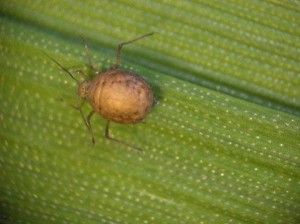Aphid populations are starting to rise on wheat, but there have not been any reports of necessary treatments. The primary aphid being found is bird cherry-oat aphid. A few English grain aphids and greenbugs are also in the mix. Bird cherry-oat aphid is generally not a serious threat to cause direct damage unless populations are very high. Seed treatment applications and foliar applications to very small wheat are typically intended to prevent aphid transmission of barley yellow dwarf virus, and insecticide applications at this late date would not provide this benefit. I don’t think any state in the Midsouth has a specific treatment threshold for bird cherry-oat aphids or English grain aphids. Treatment would only be recommended if infestations were causing significant symptomology such as or honeydew accumulation, stunting and chlorosis in hot spots. Be aware that water logging and other environmental factors can cause similar symptoms, so pinning this on aphids may require some detective work. Lady beetle, other predators and parasites can rapidly reduce aphid populations.
Greenbugs are more damaging because they inject a toxin while they feed. At this time, treatment for greenbugs is not recommended unless populations exceed several hundred per row foot. The “Arkansas” threshold commonly used is 200-300 aphids per foot of row for wheat 6-20 inches tall, even higher for larger wheat.
If treatment is necessary, the most commonly used products are pyrethroid insecticides such as Baythroid XL, Declare, Karate/Warrior II, and Mustang Max. Dimethoate and a few other products can also be used at the rates recommended in UT’s insect control recommendations for wheat.
There is some more information available in recent news blogs from Mississippi and Arkansas (below).



Unnecessary spraying for aphids can be avoided by scouting the wheat.
True enough. At this stage of wheat development, it takes several hundred aphids per foot of row to justify an insecticide application. At these levels, scouting is fairly easy.